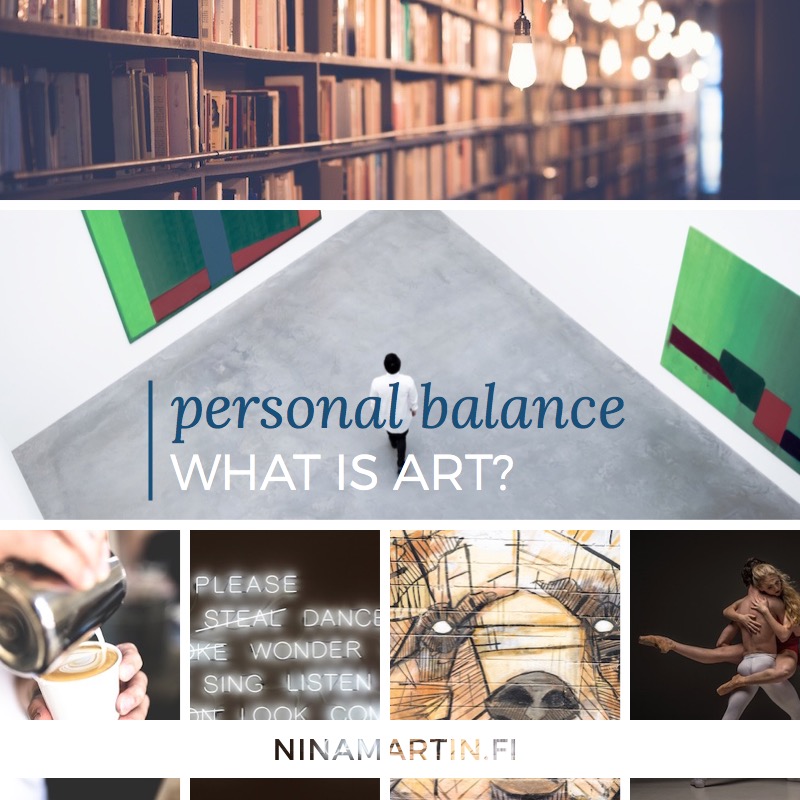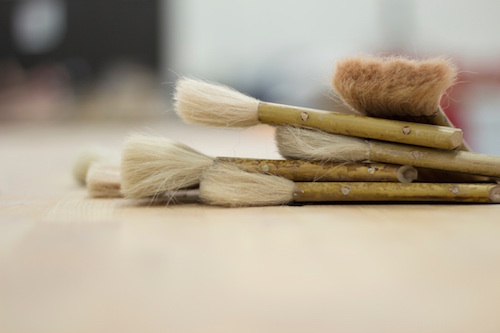Trying to define art such that everyone agrees with it is probably a futile endeavour, but at least we can attempt to describe what can belong under the umbrella of ‘the arts.’ Aside from visual arts, we also discover fields there such as literature and performing arts, but less often I find people perceiving gastronomy as part of the arts. Many of us eat with our eyes, too, which is why I’ve dedicated a board on Pinterest solely to the art of plating, and if you’re not quite convinced yet of how food really is art, theatre to be more precise, take a look at this short video of Elise shattering her Anna’s Mess aka Pink Death Star on the 2016 MasterChef Australia show. The recipe is an incredibly challenging chocolate dessert by Anna Polyviou and fulfills perfectly the judges’ desire to see “more theatre” when dining. So while I’m no real artist with a degree, I enjoy the arts in a multitude of forms and hope with this commentary to bring something different to the table when discussing what art is.

What belongs in the arts?
Speaking of Pinterest, when browsing generally in the arts category, the results generated reflect well what people think should classify as something artistic.
In this wonderful melting pot we find René Magritte, a sand sculpture, poignant street art asking how many bombs it will take to end a war, paper quilling, embroidery art, 3D graphics, manga figures, iPhone wallpaper photography, metalwork jewellery, macro photography of snowflakes, typography of cupcake frosting, tattoo art, and zentangle patterns and colouring for mindfulness purposes. And lots of other stuff as well.
Reading a quote “Art should comfort the disturbed and disturb the comfortable” by Cesar A. Cruz is perhaps the most satisfactory, and simultaneously unsatisfactory, description of its purpose that I’ve come across.
I’m also reminded by a scene in Mona Lisa Smile, where Julia Roberts as the arts teacher asks her students what art is. She shows a slide of a farm animal, clearly drawn by a child, then asks whether that would be called art. A discussion leads to the conclusion that the right people need to call something art for it to even be considered art. And it goes without saying that art is what hangs in a museum.
In the same film, Jackson Pollock is spreading shock waves throughout polite society with his pieces of paint thrown onto huge wooden canvases, and while we probably would like to think we’ve come a long way since then… If it isn’t the art itself that shocks and offends, it’s differing lifestyles.
High culture and elitism
Luckily, our world today is a tad less conservative. A practical example of this is how literary critics don’t have monopoly on book reviews anymore, but thanks to the internet anyone can compose their own reviews for others to enjoy and comment on.
I have no idea of what the situation looks like where you are, but in my part of the world there’s a tendency for the official critics to use incredibly difficult language, insider vocabulary, and a bit of an elitist view on average. If you were seeing a doctor or lawyer, this would correspond to their not translating the vocabulary to something you’d have a remote chance of grasping, but you’d be exposed to one specialist term after the other, then be expected to base your future on that.
Suffice to say, with amusement I’m observing the development and eagerly awaiting the day when those reviewers care to normalise the language a bit, as is expected of everyone else in society. Otherwise one almost gets the feeling that one should adjust to their level first, before one is invited to the world of high culture. But maybe one doesn’t covet it after all.
It warmed my heart when listening to a refreshing take on exhibitions as presented on the “Monocle 24: Culture with Robert Bound” podcast, episode “Where else can you show art?” on 24 October 2016. They interviewed people displaying art in alternative places such as a Belgrade back alley, a home in London, and an elevator shaft in New York.
Textile art and quilting as example
In the textile world, there’s a whiff of a sort of elitism that can be found in the world of books, too. Certain types of works are categorised as literary fiction, whereas others need to make do with being merely genre fiction. As per Wikipedia, it “comprises fictional works that hold literary merit; that is, they involve social commentary, or political criticism, or focus on the human condition.” Because of course there is less literary merit in a decent novel belonging to the science-fiction genre. I keep hearing “fine” art for some reason, but I digress.
I’m dabbling in quilting and it still amazes me when reading some of the feedback other quilters have received from quilt-show judges on their work.
Modern quilting is branching out in sub-categories, yet there are forces working to establish one aesthetic, one definition for it. It includes the concept negative space, but then there are other modern quilts, which don’t use the space available in such a way at all, yet they’re still very far away from traditional murky colour palettes and for instance American civil-war fabric patterns. Should these makers be “allowed” to call themselves modern quilters then?
If you’re looking up quilting for the first time, you might stumble upon the concept art quilting. This is a very specific style, yet any quilt meant to be a wall-hanging work rather than functional item could be considered textile art. Labels really are unsatisfactory, aren’t they?
Labels and identities
I haven’t even stirred up the hornet’s nest of artist and designer yet, as I feel it is a bit like the label runner. When you run, do the anatomical movement of running instead of walking, you’re a runner, yet stepping into the identity of a runner can take quite some time for many.
In terms of designing, I definitely do design stuff but am no formally trained designer. It’s tricky.
One solution for an entrepreneur is the work-around of simply offering the product or service you have in mind, rather than fighting to create the correct title for yourself.

How about modern and contemporary art?
Speaking of style, spontaneously we could think that what was made earlier this year by an up-and-coming artist would be called modern art. If you’re familiar with art history, however, you know this is incorrect. Modern art in fact refers to a specific time period, which ended in the 1970s with postmodernism taking over then. Postmodernism is included in contemporary art.
You don’t have to learn art history to enjoy art in various forms, but I’m mentioning this in case you are travelling and like many other tourists want to take the opportunity to visit some famous museums. If the scope was to see contemporary art, but you chose a museum with exhibitions on modern art, you could be disappointed.
If you’re following me on Instagram, you may have noticed my recent visits to Ateneum and HAM, Helsinki Art Museum, here in Helsinki. The gorgeous pieces by Amedeo Modigliani are on display for a short while still, whereas Yayoi Kusama with her lively “In Infinity” exhibition will close even sooner. Modigliani certainly is older art, but the somewhat psychedelic aspects of Kusama’s various works made me think old shouldn’t be dismissed merely because of its age.
Like Austin Kleon writes in his “Steal Like an Artist,” it has all been done before, but then again I do wonder about the Kusama dots. Perhaps I’m playing it a bit safe, but there are merits to tranquil pieces. To each their own!
What makes good art?
While the former hornet’s nest was manageable, I think good art is its gigantic counterpart. Personally, I would say great art can be a bit repulsive even when it successfully shakes people to their core.
In literature, this would mean loving to hate the anti-hero(ine), whilst rating highly the book itself, despite a sudden urge to throw it into the fire.
You decide.
Art and money
Either you make art your business or you trade money for art, but mentioning these two in the same sentence still ruffles feathers. If you’re a starving artist, I’d love to help you sort out your thoughts on being clear on how to earn a living from your art. I truly believe that even artists need to eat and pay their bills, and there should be no shame in putting food on the table.
If you’re interested in becoming a patron of the arts, maybe there’s something in the episode “How to buy and sell art” from 11 January 2017 on the podcast “Monocle 24: The Entrepreneurs,” in which the startup ArtFinder is presented. CEO Jonas Almgren talks about how the company wants everyone in the world to own art and for all independent artists to be able to make a living doing what they love.

Art and medicine
Perhaps you’ve already heard of art used in therapy for mental healing? What took me by complete surprise, however, was the piece of news I read on 9 November 2016. Apparently, patients suffering from schizophrenia have been prescribed something called the Feeniks model (Phoenix), which includes art therapy, to prevent them from returning to closed wards due to not taking medication once they feel good again after psychosis.
The project has been a huge success here in Finland. Not only is society saving money and patients don’t have to spend as much time in hospitals, but they can both deal with the feelings around mental unhealth and bias even within the healthcare world itself as well as build confidence.
A challenge for us all
I’d like to challenge us all to visit our local museums, concerts, and other cultural events more regularly.
In addition to the two aforementioned, within the past month I’ve visited also Taidehalli with its now closed exhibition “Love on the Road” featuring Nina Hartley by Paola Suhonen, and Lux Helsinki 2017, a light festival downtown.
Three of the four events were free of charge, and chances are you can find something similar in your area. As a beginner entrepreneur, my budget is very limited and so I’m keeping track of all the days when the museums can be visited for free. They aren’t many, but I cherish my visits even more this way.
So what’s the challenge, you ask? Visit something moving, exciting, stirring, shocking, fun, sad, you name it. Then share your photos in social media using the hashtag #theartsquarterly. Yes, that’s right, The Arts Quarterly.
While I love the arts, it’s still effort to squeeze them into a regular routine of appreciation, which is why I’m guessing there’s a chance you may feel the same despite possibly living amidst an abundance of culture. New impressions, however, are vital to keep innovation high, inspiration flowing, and the joy of creativity alive. In particular if you own a small business, you need to expose your mind to unexpected thoughts to avoid getting stuck.
Join me in #theartsquarterly! Yes, no?
Leave a Reply
You must be logged in to post a comment.